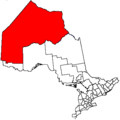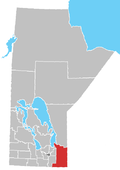Shoal Lake 37A | |
|---|---|
| Shoal Lake Indian Reserve No. 37A | |
| Coordinates: 49°28′N95°10′W / 49.467°N 95.167°W | |
| Country | |
| Provinces | |
| Division / District | Division 1 / Kenora |
| First Nation | Animakee Wa Zhing 37 |
| Area | |
| • Land | 7.77 km2 (3.00 sq mi) |
Shoal Lake 37A is a First Nations reserve [1] on Shoal Lake straddling the border between Manitoba and Ontario. It is one of the reserves of the Animakee Wa Zhing 37 First Nation.


